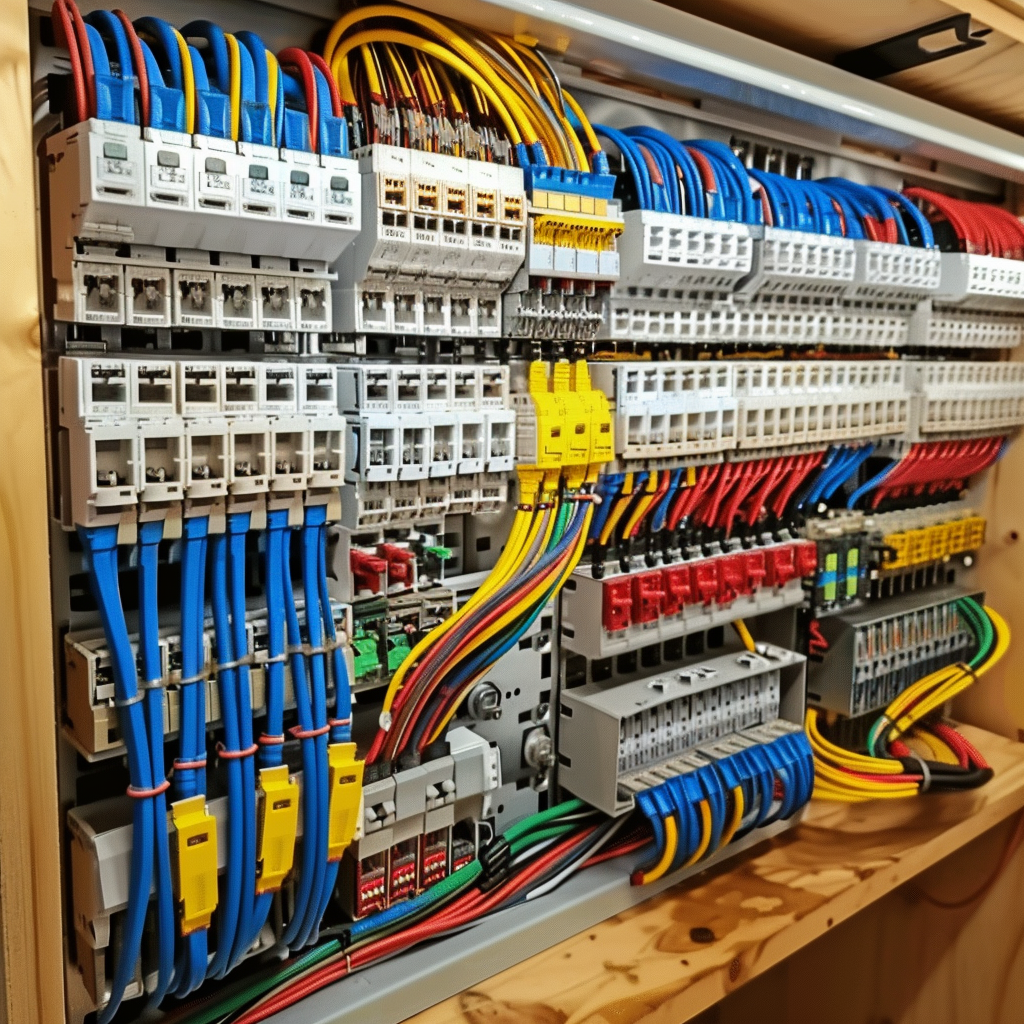Customized BRE Electrical Solutions for Effective and Safe Installations
Customized BRE Electrical Solutions for Effective and Safe Installations
Blog Article
Debunking Electrical Installment: Understanding Codes and Rules for a Lawful and Safe Arrangement
In the realm of electric setup, adherence to codes and policies is critical to make certain both legality and security. The journey to debunking electric installment goes past simple familiarity with laws; it necessitates a profound grasp of how to carry out risk-free electrical techniques efficiently.
Relevance of Electric Codes
The adherence to electric codes is crucial in making sure the safety and reliability of electric setups. Electric codes act as a collection of requirements and standards that determine the appropriate layout, setup, and upkeep of electric systems. These codes are established to minimize the danger of electrical hazards, fires, and various other safety and security issues that might emerge from malfunctioning electric work.
Moreover, electric codes are regularly upgraded to incorporate new innovations, ideal methods, and precaution. Staying updated with these codes is important for specialists in the electric sector to make sure that their job meets the most current security requirements. Ultimately, the importance of electrical codes exists in developing a safe and effective electric facilities that profits both people and neighborhoods.
Key Rules for Safety
Numerous basic laws regulate the security standards in electrical installments. One crucial law is the National Electrical Code (NEC), which supplies guidelines for safe electric style, installment, and examination to secure individuals and residential property from electrical hazards. The NEC covers elements such as circuitry techniques, grounding, overcurrent defense, and devices setup to guarantee a safe electric system.
One more crucial law is the Occupational Safety And Security and Health Management (OSHA) standards, which focus on the safety of employees associated with electrical installments (BRE Electrical). OSHA regulations include demands for appropriate training, security treatments, and individual safety equipment to avoid work environment mishaps and injuries
Additionally, the International Electrotechnical Commission (IEC) requirements intend to balance electric installation laws on a worldwide range. These standards address problems like electrical equipment security, electromagnetic compatibility, and power effectiveness to advertise uniformity and security in electric setups worldwide.
Conformity with these essential policies is necessary to make sure the safety and validity of electrical installments, shielding both people and residential property from the dangers related to electricity.
Recognizing National Electric Code
Secret laws such as the National Electric Code (NEC) give crucial standards for risk-free electric style, installment, and assessment to guarantee the protection of individuals and residential property from electrical dangers. The NEC, also referred to as NFPA 70, is an extensive set of requirements for electrical setups that are upgraded every 3 years. It is established by the National Fire Protection Association (NFPA) and is widely adopted throughout the United States.
The NEC covers various aspects of electric job, including circuitry methods, grounding, overcurrent defense, and devices installation. It intends to protect individuals and building by addressing potential dangers related to electrical systems. Conformity with the NEC is usually imposed by local authorities having territory BRE Automation Australia (AHJs), such as constructing code authorities and inspectors.
Recognizing the NEC is critical for electrical contractors, designers, and assessors to make certain that installations fulfill the necessary safety and security needs. By adhering to the NEC standards, specialists can aid stop electric accidents and guarantee the dependability of electrical systems in property, industrial, and commercial setups.

Conformity With Neighborhood Building Regulations
Comprehending and sticking to regional structure codes is crucial for making sure the safety and compliance of electrical installations within a particular territory. These codes detail certain demands for electric installments, such as the kind of electrical wiring to be used, positioning of outlets, grounding methods, and load capacities.
When it comes to electric installments, failing to follow local building regulations can cause serious effects. Non-compliant setups may pose security dangers, raise the threat of electric fires, and bring about pricey fines or legal issues. In addition, insurer may reject to cover problems arising from installations that do not satisfy local building regulations needs. It is vital for electrical contractors and contractors to remain notified around and purely adhere to the local building codes relevant to their projects.
Ensuring Safe Electric Practices
Exercising strict adherence to developed security protocols is essential in the area of electric setups to reduce possible risks and ensure the wellness of people and homes. Security in electric work includes different elements, beginning with the correct training of personnel involved in setup, maintenance, and repair work. It is vital to comply with manufacturer guidelines meticulously when taking care of electrical components and equipment. Before starting any kind of work, it is imperative to carry out a detailed threat assessment to identify possible dangers and carry out preventive measures. Using individual safety devices (PPE) such as protected gloves, safety glasses, and non-conductive shoes is non-negotiable to protect against electric shocks and arc flashes. Normal equipment evaluations, testing, and maintenance timetables are essential to identify and remedy mistakes prior to they intensify into safety and security risks. Additionally, adherence to appropriate lockout-tagout procedures throughout upkeep tasks is important to prevent unintentional energization of circuits. By focusing on safe methods, electrical installations can function efficiently while reducing the chance of mishaps or damages.
Conclusion
To conclude, adherence to electrical codes and guidelines is critical for guaranteeing the safety and security and legality of electrical installments. Understanding the National Electric Code and compliance with regional building ordinance are vital for a risk-free configuration. By adhering to these standards and practicing risk-free electrical practices, people can protect against possible risks and make sure the proper functioning of their electrical systems.
Report this page